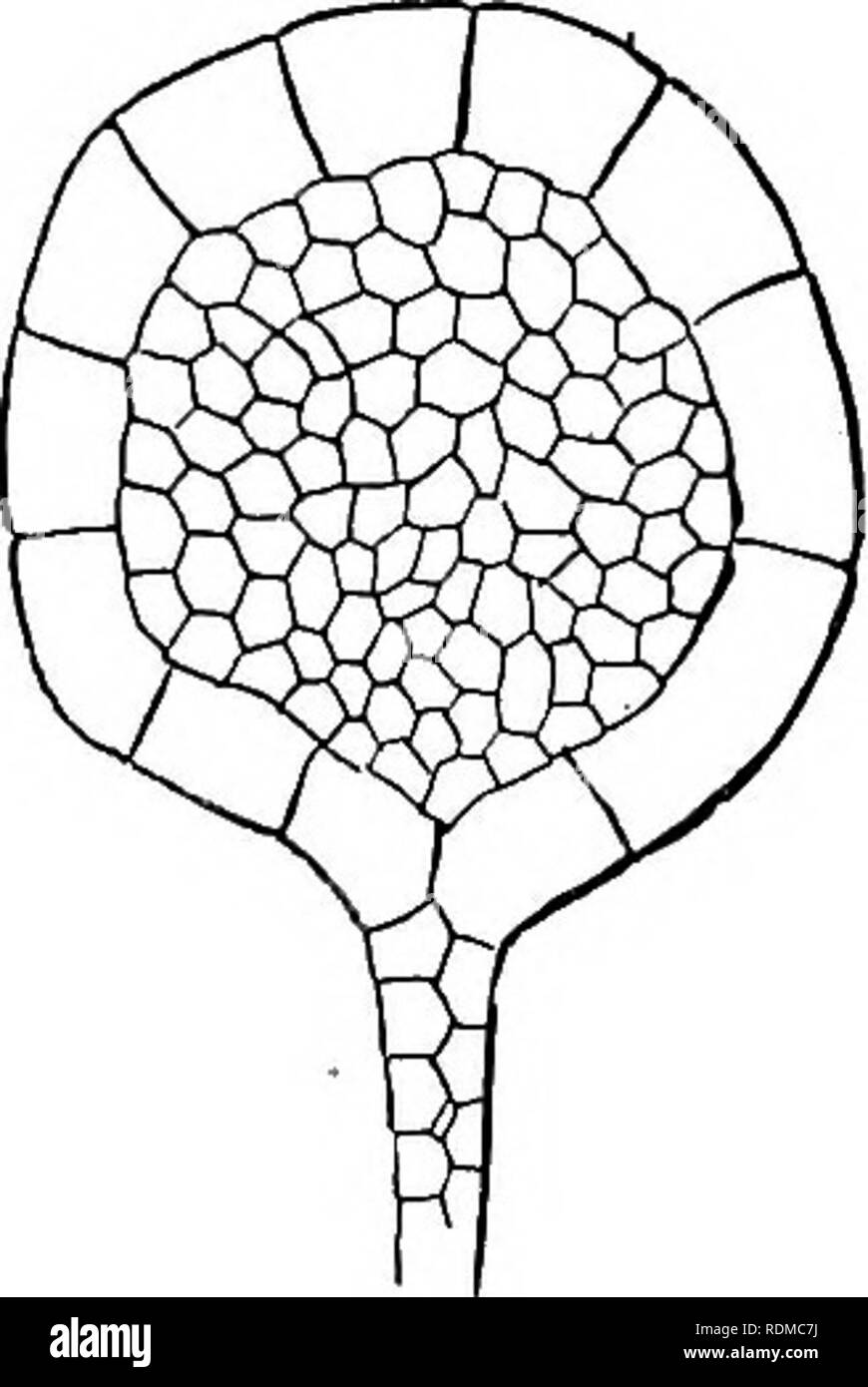. The Cambridge natural history. Zoology. Fig. 276.- â Trochocystis bohemieus, viewed from two sides. (After Jaekel.) Moutli. skeleton; but in the presence of a differentiated stem and the development of only two rays, it is more differentiated. The anus is on one of the fiat sides, covered with a flat plate acting as a valve. The members of this group were formerly confounded with Cystoidea, from which they differ in the absence of the characteristic pores. Trochocystis, the genus figured, is devoid of any horn-like outgrowths of the calyx. CLASS IV. CYSTOIDEA Pelmatozoa with respiratory orga

Image details
Contributor:
The Book Worm / Alamy Stock PhotoImage ID:
RDMC7JFile size:
7.1 MB (192.6 KB Compressed download)Releases:
Model - no | Property - noDo I need a release?Dimensions:
1293 x 1932 px | 21.9 x 32.7 cm | 8.6 x 12.9 inches | 150dpiMore information:
This image is a public domain image, which means either that copyright has expired in the image or the copyright holder has waived their copyright. Alamy charges you a fee for access to the high resolution copy of the image.
This image could have imperfections as it’s either historical or reportage.
. The Cambridge natural history. Zoology. Fig. 276.- â Trochocystis bohemieus, viewed from two sides. (After Jaekel.) Moutli. skeleton; but in the presence of a differentiated stem and the development of only two rays, it is more differentiated. The anus is on one of the fiat sides, covered with a flat plate acting as a valve. The members of this group were formerly confounded with Cystoidea, from which they differ in the absence of the characteristic pores. Trochocystis, the genus figured, is devoid of any horn-like outgrowths of the calyx. CLASS IV. CYSTOIDEA Pelmatozoa with respiratory organs in the form of " diplo- pores" or "pore-rhombs." In a great many cases there is a stalk, but in other cases this is atrophied, and the animal is attached by the base of the calyx. The radial canals run for a shorter or longer distance over the calyx, but the plates of the calyx themselves are not modified for them. Either they run in simple grooves, or they are protected by a special series of plates lying above the plates of the calyx. The terminal portions of the radial canals are in all cases free, supported by unbranched a, rms consisting usually of a double row of ossicles. These arms are termed " fingers." It will be gathered from the description just given that the fingers and the respiratory organs distinguish Cystoidea from. Please note that these images are extracted from scanned page images that may have been digitally enhanced for readability - coloration and appearance of these illustrations may not perfectly resemble the original work.. Harmer, S. F. (Sidney Frederic), Sir, 1862- ed; Shipley, A. E. (Arthur Everett), Sir, 1861-1927. ed. [London, Macmillan and Co. , Limited; New York, The Macmillan Company